Dear all,
As you may have already seen, this week ORCA’s State of Cetaceans 2024 report was published. The report gives insight into how the world’s cetaceans are coping with human impacts on our oceans, and it couldn’t have been compiled without the data collected by YOU – our incredible Marine Mammal Surveyors.
The report analyses over 330,000 km of surveys conducted in 2023, recording an amazing 55,604 cetaceans worldwide. Marine Mammal Surveyors conducting distance sampling surveys from the bridge of ships in the UK ferry network, contributed to 20,457 km of survey effort and recorded 4,292 animals in total. Animals were recorded on every route in 2023, with the highest number of sightings, and greatest variety of species, being recorded on the Brittany Ferries Plymouth-Santander route. In addition, 5,676 animals were recorded during Marine Mammal Surveyor Saga surveys, traversing the Atlantic Ocean through Europe to Canada, the U.S and the Caribbean, the Arctic Ocean and the Mediterranean Sea.
Brittany Ferries survey summary for 2023
Overall, 10,500 km of effort was carried out in 2023, resulting in 348 sightings, of 2,333 individuals, from 10 cetacean species. Common dolphins were the most frequently sighted species, and the only species to be seen on every Brittany Ferries route. In total 1,918 common dolphins were seen on surveys from Brittany Ferries vessels.
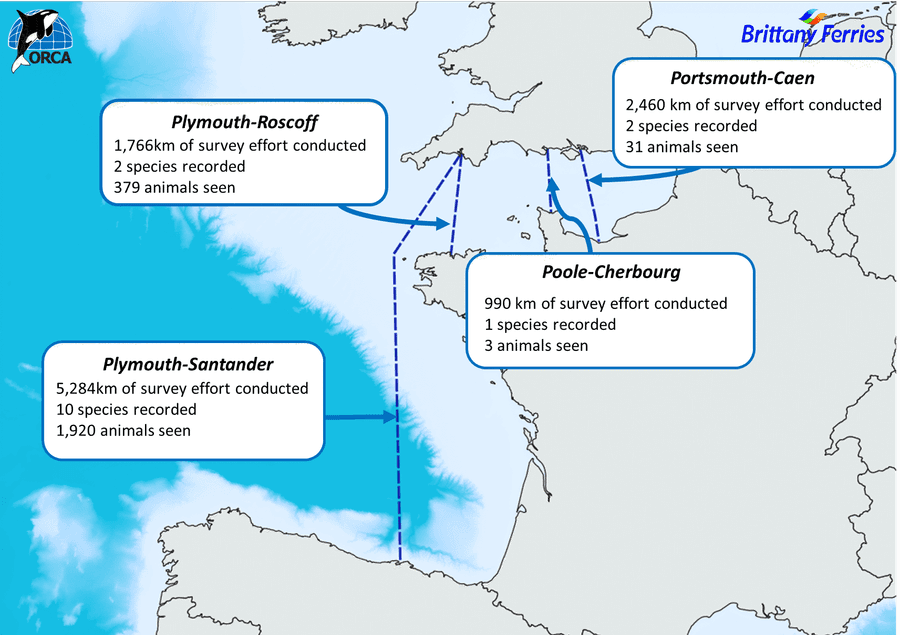
Caledonian MacBrayne survey summary for 2023
Overall, 3,822 km of effort was carried out in 2023, resulting in 277 sightings, of 1,118 individuals, from 7 cetacean species. The greatest variety of baleen whales were seen on the Ullapool-Stornoway route, with fin, humpback and minke whales all being recorded.
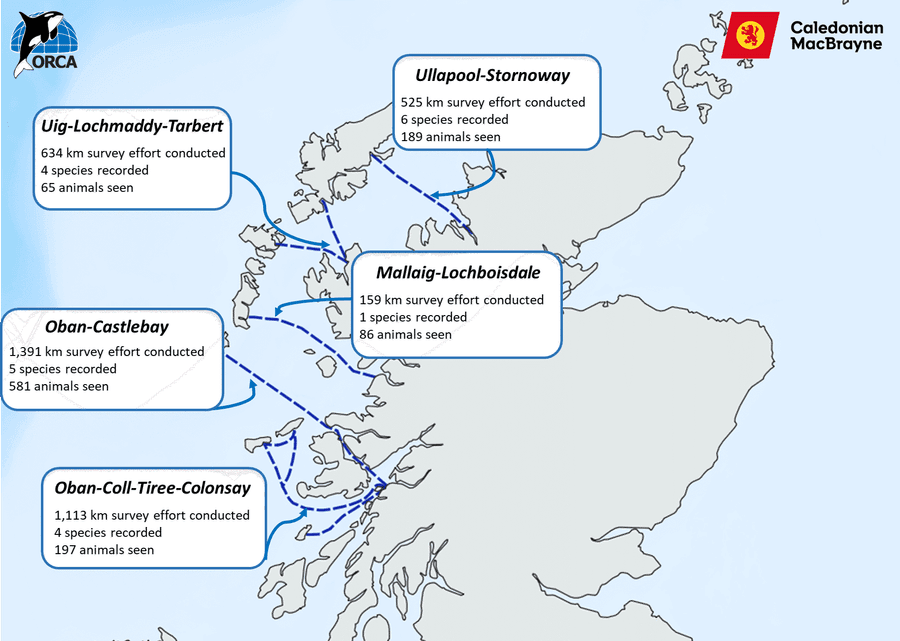
DFDS survey summary for 2023
Overall, 2,417 km of effort was carried out in 2023, resulting in 65 sightings, of 121 individuals, from 4 cetacean species. The Newcastle-Amsterdam route saw higher numbers of harbour porpoise and white-beaked dolphins than any other route that ORCA surveys on.
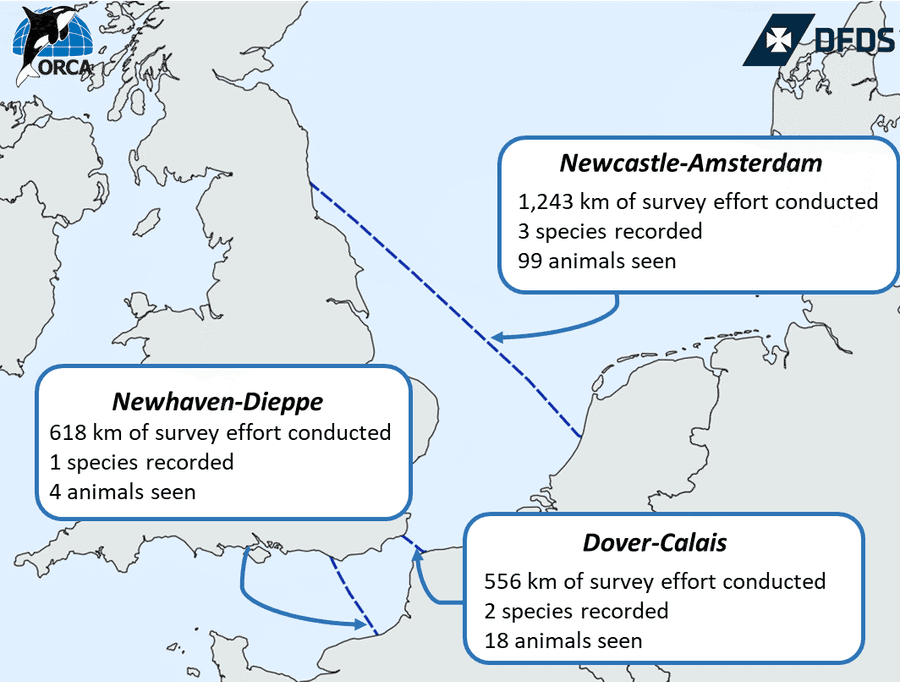
Isles of Scilly Travel survey summary for 2023
Overall, 1,766 km of effort was carried out in 2023, resulting in 155 sightings, of 624 individuals, from 5 cetacean species. Common dolphins were the most frequently sighted species on this route, with 494 individuals recorded; this route also saw higher numbers of Risso’s dolphins than any other route in 2023, with 23 animals recorded.
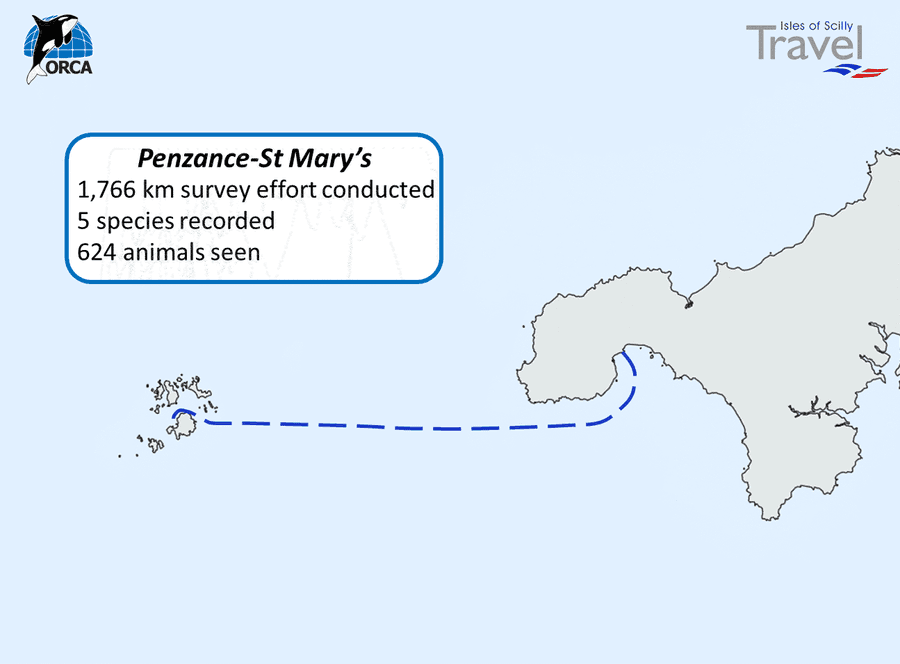
NorthLink Ferries survey summary for 2023
Overall, 1,952 km of effort was carried out in 2023, resulting in 51 sightings, of 96 individuals, from 6 cetacean species. The Aberdeen-Lerwick route was one of only two routes where white-beaked dolphins were recorded in 2023.
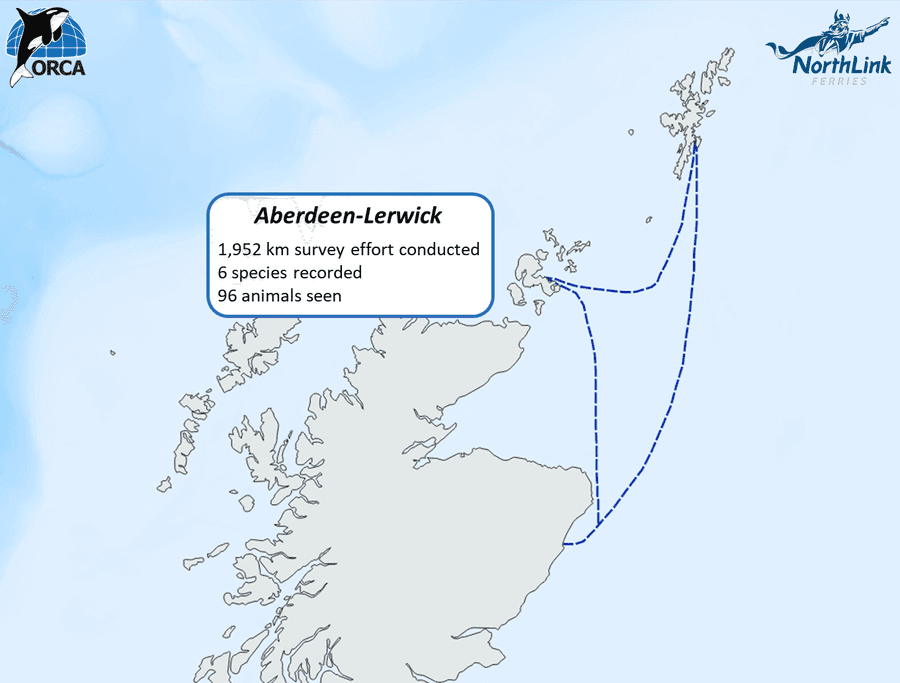
Some of the other highlights from the State of Cetaceans report include:
Ongoing sightings recorded by Marine Mammal Surveyors from ferries traversing the Bay of Biscay, North Sea, English Channel, Hebrides and Celtic Seas, provided compelling data to inform the creation of 33 new Important Marine Mammal Areas (IMMAs) in the Baltic and the Northeast Atlantic.
High rates of fin whale sightings were observed southeast of Greenland, south of Iceland and to the northwest of the Iberian Peninsula. Additionally, a clear hotspot emerged in the deep waters of the Bay of Biscay during the summer months.
Minke whale sightings were concentrated in shallower, coastal waters in the Celtic Sea, western English Channel and around Iceland, Norway and Greenland. The highest sighting numbers however were in the north western North Sea and the Hebrides.
Hotspots for Cuvier’s beaked whale sightings were observed on the shelf edge of the Armorican shelf and in the Alboran Sea in the Mediterranean Sea. This coincides with the Alboran Deep Important Marine Mammal Area (IMMA) which was designated in part as an important habitat for Cuvier’s beaked whales which are present in this area in high densities every season.
Unidentified beaked whale sightings rates were high in the canyons of the Canadian continental slope, off the northwest corner of the Iberian Peninsula and around Eastern Atlantic islands of the Azores, Madeira and the Canary Islands and in the submarine canyons of the southern Bay of Biscay. This is consistent with previously identified important beaked whale habitat.
Findings from the ongoing Southern Ocean Distance Sampling project undertaken by ORCA, the Government of South Georgia and the South Sandwich Islands, the British Antarctic Survey and HX, discovered that humpback whales near the Antarctic Peninsula were present in far higher numbers early in the season than anticipated and that the waters around Elephant Island are becoming a hotspot for fin whales.
Many of these findings will inform decision-making on conservation measures to protect whales, dolphins and porpoises globally.
The production of this annual report was only possible due to the dedication of our incredible network of Marine Mammal Surveyors. We want to take this opportunity to say a massive THANK YOU for all of your hard work, time and commitment to ORCA. Without ORCA’s citizen scientists, we would be unable to carry out this vital research protecting cetaceans and their habitats.

